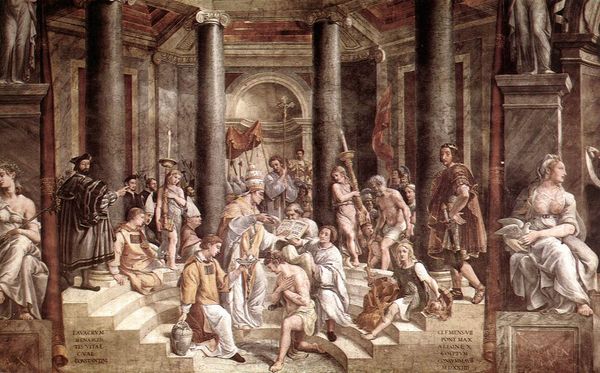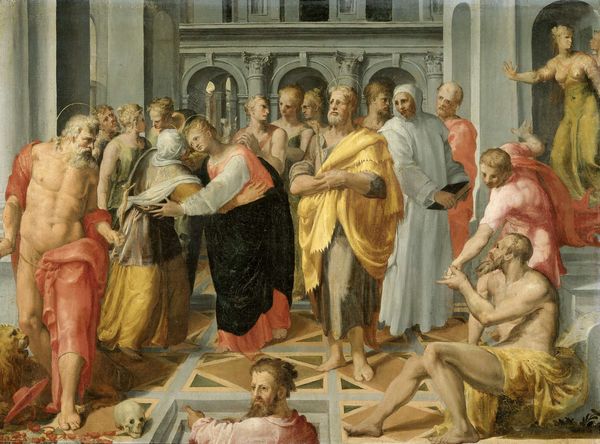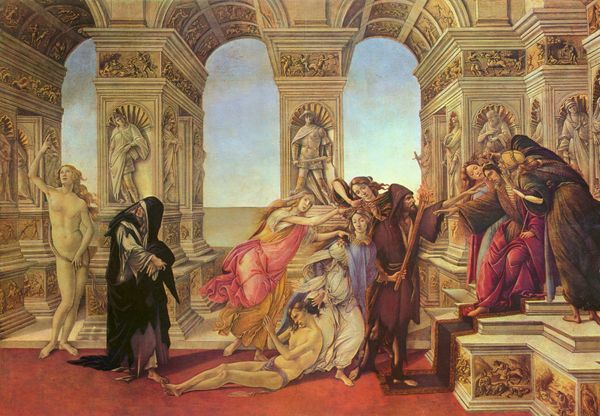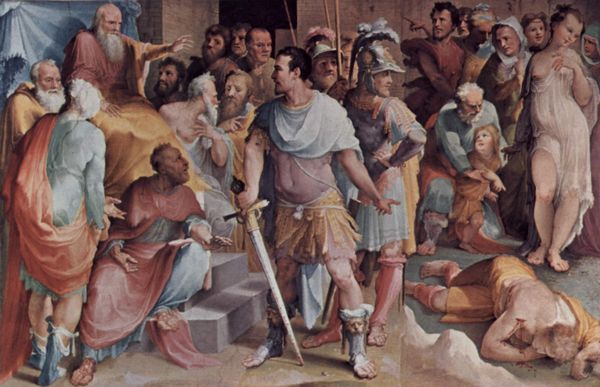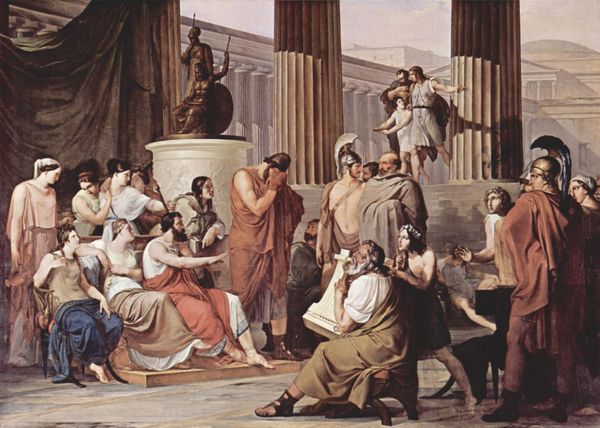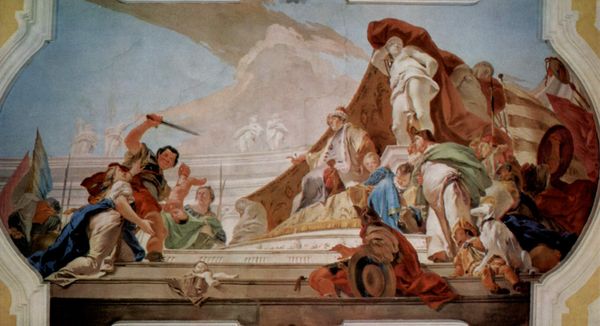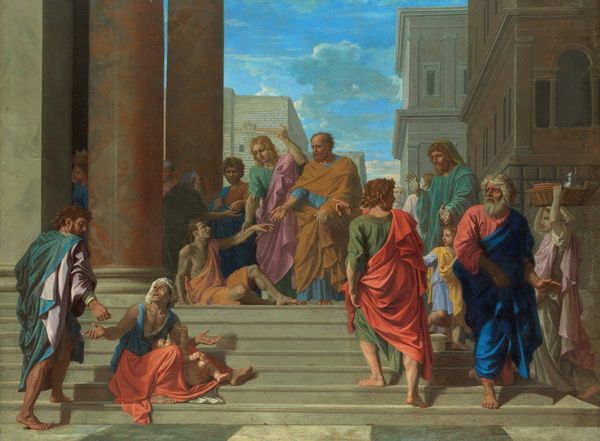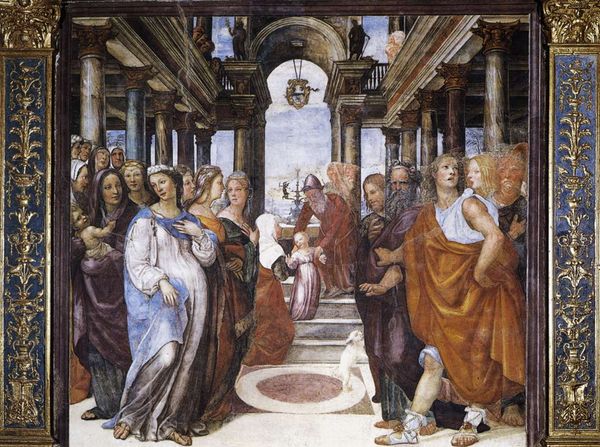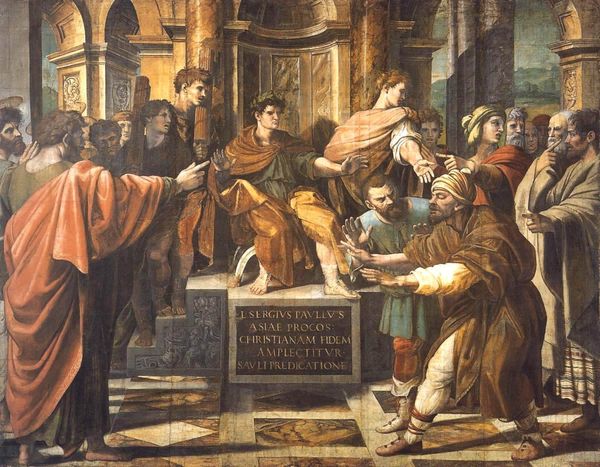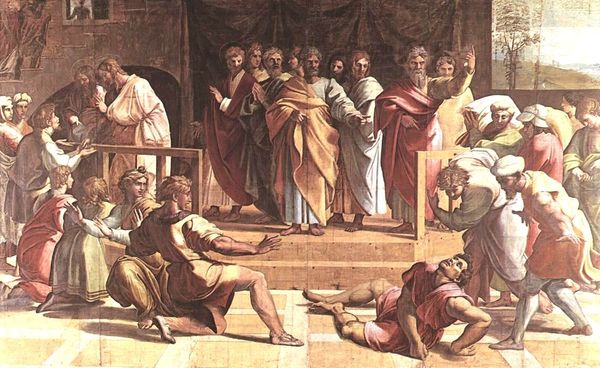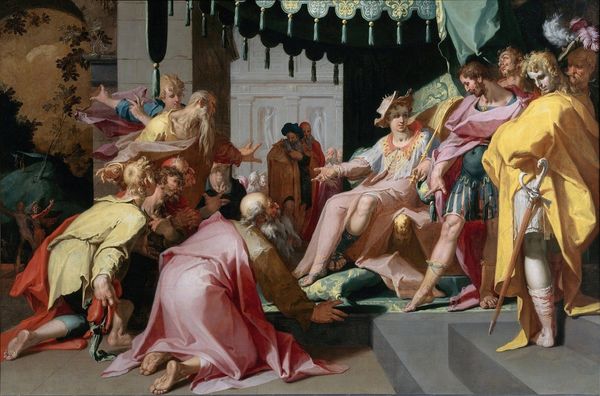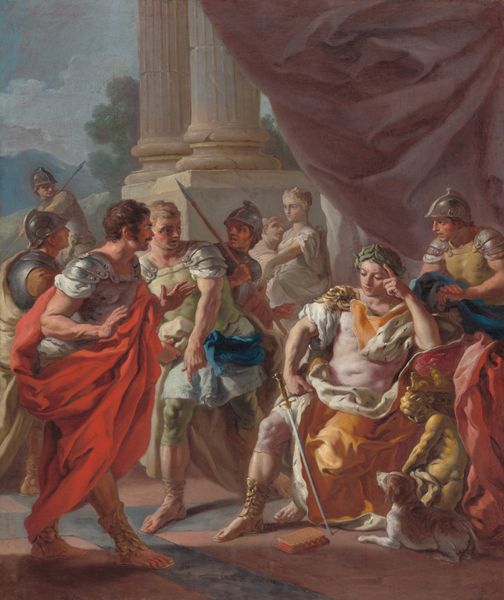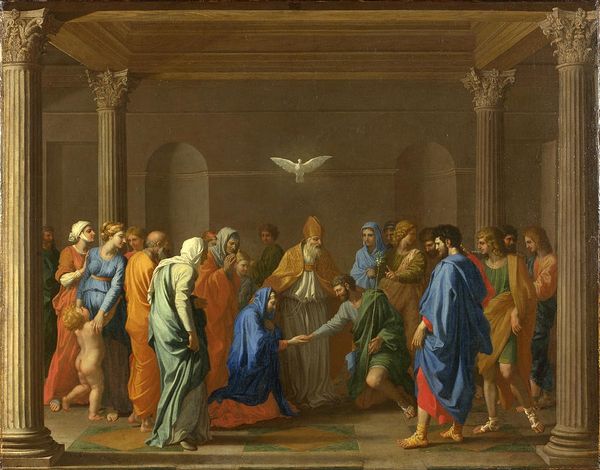
painting, oil-paint, fresco
#
narrative-art
#
painting
#
oil-paint
#
mannerism
#
figuration
#
fresco
#
oil painting
#
underpainting
#
history-painting
#
academic-art
#
italian-renaissance
Copyright: Public domain
Curator: My first impression is definitely unsettling; a hushed, almost breathless tension hangs in the air. There's something brutally staged about it all, even theatrical. Editor: It's certainly a striking piece. What we're looking at is Domenico Beccafumi’s oil painting "The Sacrifice of Seleucus of Locri", created around 1535. Beccafumi really leaned into that Mannerist style here. Curator: Ah, Mannerism explains the exaggerated poses and almost unreal lighting. It gives the scene a dreamlike, yet disturbing, quality. The story, Seleucus sacrificing his son’s eyes for adultery—talk about a symbolic gut punch! Editor: Precisely! And the iconography is heavy. Look at the central figure, presumably Seleucus. His gesture—authoritative, cold. And the figure to his left, brandishing a dagger – is it justice or vengeful cruelty being depicted? Curator: That dagger really steals focus. It highlights, ironically, that line between justice and plain barbarism, doesn't it? What's being “sacrificed” here? The son's sight, or Seleucus's humanity? And the young woman kneeling— is she begging, or resigned? Her pose suggests utter despair, which could reflect themes around familial relationships, moral law, or the nature of justice within communities. Editor: That duality is classic Mannerism – elegance and grotesqueness intertwined. Beccafumi is asking us to unpack the moral complexities of the story through symbolism. The bridge behind Seleucus suggests both a passage forward but a broken crossing; figures being hauled across. Do those being saved deserve that deliverance? Even children are being saved. Perhaps society's dependence on an authority whose justice may be flawed, in turn damaging them. It creates quite a tension between visual appeal and its somber narrative weight, a typical visual strategy employed by Beccafumi. Curator: It’s almost a perverse dance of beauty and horror, forcing us to question what it truly means to uphold the law and who pays the ultimate price. He certainly gets us mulling over uncomfortable issues. Editor: Indeed. Beccafumi compels us to consider how symbols like authority, judgement, family, or forgiveness are embodied across time. Perhaps its value remains within how art grants viewers the capacity for reflective judgment, or questioning assumptions about deeply embedded social dynamics.
Comments
No comments
Be the first to comment and join the conversation on the ultimate creative platform.
